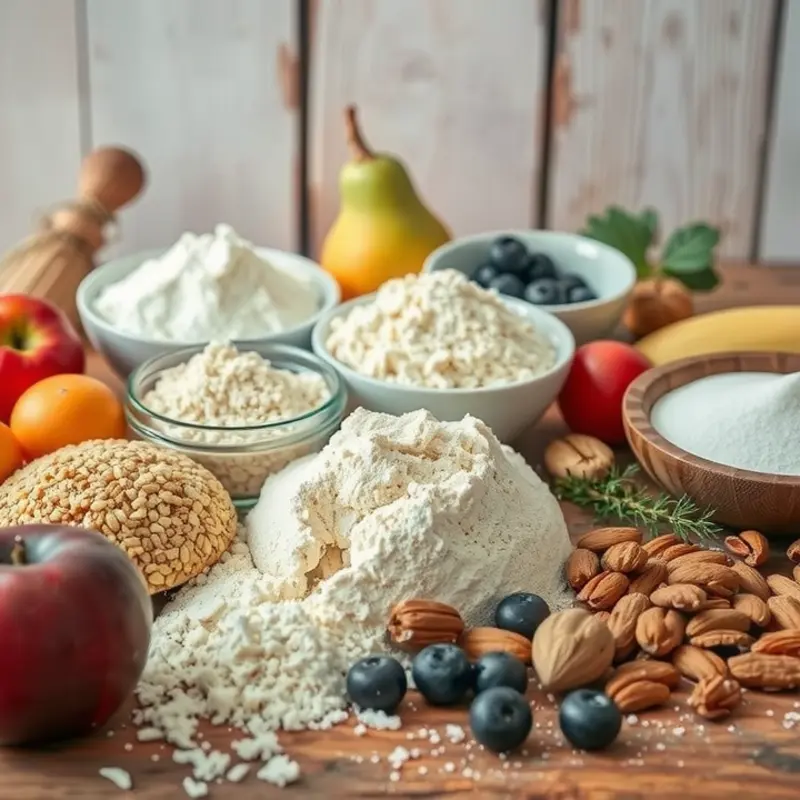Every home cook has faced the frustration of unevenly baked goods. Whether it’s a cake that rises higher on one side or cookies that brown unevenly, these common issues can be resolved with a few practical techniques. By understanding the science behind baking and implementing some straightforward tips, you can achieve consistently beautiful results. Let’s explore efficient methods that will improve your baking game, ensuring delicious outcomes every time.
Understanding Oven Dynamics

Mastering the art of baking begins with understanding your oven’s unique characteristics. Each oven, whether it’s a modern convection model or an older conventional type, behaves differently, making it crucial to learn its dynamics for even baking.
Firstly, let’s explore the concept of hot spots. These are areas within your oven that tend to heat more than others, often leading to unevenly baked pastries. A simple way to identify these spots involves using slices of white bread. Place them evenly across a baking sheet and toast them in the oven. Areas where the bread browns faster indicate hot spots. By knowing these locations, you can rotate your trays during baking to ensure even heat distribution.
Next, never underestimate the power of proper preheating. Many users rush this essential step, impacting the baking consistency of their pastries. Preheating ensures the oven reaches the desired temperature before your pastries go in. This practice prevents fluctuations in temperature during the initial phase, resulting in better-risen, properly browned baked items.
Rack positioning is another critical aspect that often goes unnoticed. Different recipes may require placing your pastries either in the center, top, or bottom rack, influencing the bake’s outcome. Generally, the middle rack is ideal for most baking needs, providing balanced exposure to heat from above and below. However, for specific recipes where browning or a crisp top is desired, the top rack is optimal. Conversely, the bottom rack is favored for items needing a robust crust.
Furthermore, investing in an oven thermometer can be a game-changer. Ovens’ built-in gauges can misreport temperatures over time. With an independent thermometer, you can ensure your oven’s actual temperature matches your recipe’s requirements. This tool is particularly beneficial for precision baking, such as in pastries and bread.
To make the most out of your oven and reduce environmental impacts, consider how the placement and efficiency of your equipment affect energy use. For instance, positioning your oven away from drafts can help maintain stable temperatures. This practice supports more consistent baking results and consumes less power by leveraging your oven’s retained heat more tips on eco-smart kitchen practices.
Being attentive to these fundamental factors prepares you for successful baking outcomes time and again. This knowledge provides a foundation for further exploration into the delicious world of pastries, where each recipe can benefit from refined oven techniques.
Size Matters: Consistency in Ingredients

Consistent ingredient sizes play a pivotal role in achieving even baking results. Ensuring each component of your recipe measures precisely impacts not only bake times but also the uniformity of texture and flavor. Accurate measurement starts with using the right tools. A kitchen scale, for instance, allows for precise measurement of ingredients like flour and sugar, emphasizing weight over volume for accuracy.
Fruits and nuts are key ingredients in many pastries, and achieving even chopping is essential. A sharp knife or a mandoline slicer ensures even slices of fruits like apples or pears, helping them cook uniformly and release juices consistently. Similarly, nuts should be chopped uniformly to prevent uneven distribution and baking.
Dough consistency is another critical factor. When spreading dough, whether for cookies or pie crusts, aim for equal thicknesses. Uneven dough cooks inconsistently, leading to overbaked edges and underbaked centers. Rolling pins with thickness rings can help maintain even dough thickness every time.
Sifting dry ingredients is a simple yet effective technique to ensure even baking. Sifting incorporates air, preventing clumps and ensuring a light, airy texture. It also aids in even mixing with other ingredients, avoiding dense or unevenly baked products.
Understanding ingredient ratios is fundamental. Pastry composition often depends on the precise balance between flour, fat, and liquid. A slight imbalance can lead to overly dry or soggy results. This principle is evident in classic recipes like shortcrust pastry, where the right flour-to-fat ratio ensures flakiness.
For those exploring innovative baking, understanding substitutions is key. Subbing ingredients like non-dairy options requires attention to ratios and texture. Exploring non-dairy probiotic guides can offer alternatives that maintain integrity in baking. Learn more about these alternatives here.
Incorporating air is another essential technique for even baking. Beating eggs or creaming butter and sugar until fluffy introduces air pockets, ensuring a tender crumb in baked goods.
Remember, consistency is your ally in the baking world. A systematic approach to ingredient preparation and understanding its influence on the baking process is key. Embrace these techniques to refine your skills and achieve perfectly even results every time.
Final words
Baking evenly is a skill that can be mastered with a little knowledge and practice. By understanding your oven’s dynamics and paying attention to the size and consistency of your ingredients, you can ensure that every baked good comes out perfectly. Embrace these methods, make small adjustments in your process, and soon you will see noticeable improvements in your baking results. Remember that baking is not only a science but also an art. Enjoy the journey, and happy baking!







